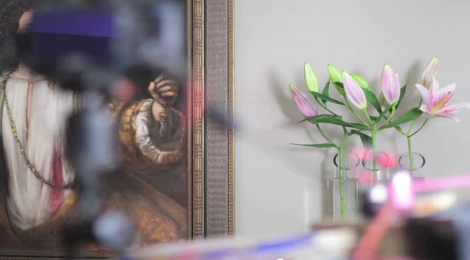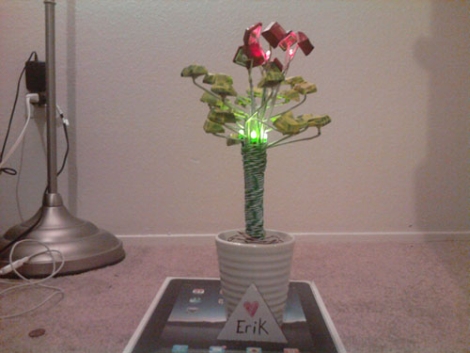There’s been plenty of research into “smart fabrics”, and we’ve seen several projects involving items of clothing with electronics integrated inside. These typically include sensors and simple actuators like LEDS, but there’s no reason you can’t integrate moving electromechanical systems as well. [Rehana Al-Soltane] did just that: she made an elegant evening dress with flowers that open and close on command.
It took [Rehana] a bit of experimentation to figure out a floral design that opens and closes smoothly without crumpling the fabric or requiring excessive force to actuate. She finally settled on a plastic sheet sandwiched between two layers of fabric, with pieces of fishing line attached that pull the edges inward. The lines are guided through a tube down the back of the dress, where a servo pulls or releases them.
The mechanical flower can be operated by touch — [Rehana] made one of the other flowers conductive by embedding copper tape between its petals and connected it to the capacitive touch sensor interface of an Atmel microcontroller. The micro is sitting on a custom PCB that’s worn on the hip, with wires going to the servo at the back. You can see how the system operates in the video embedded below.
The dress is [Rehana]’s final project for the famous “How To Make (almost) Anything” course at MIT, and required a wide variety of skills: the cable guide was 3D printed, the flower petals were laser cut, the PCB was milled, and the end product was sewn together. [Rehana] has a knack for making electronics-infused clothes and accessories, including the flexible PCB crown that she’s wearing in the image above. Continue reading “Elegant Evening Dress Sports Servo-Actuated Flowers”





 A box containing sensors is installed in the flower bed. The intent of this project was not to have the Raspberry Pi spit out hard factual data regarding soil moistness, temperature and ambient noise, but to instead take that data from the sensors and send out a story-like narrative that makes the communication feel more personal. To receive these comments from the poppies, you can follow them on Twitter: @tweetingpoppy.
A box containing sensors is installed in the flower bed. The intent of this project was not to have the Raspberry Pi spit out hard factual data regarding soil moistness, temperature and ambient noise, but to instead take that data from the sensors and send out a story-like narrative that makes the communication feel more personal. To receive these comments from the poppies, you can follow them on Twitter: @tweetingpoppy.










